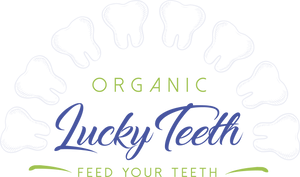
7 Recycling Tips For Daily Life
Everyone knows that recycling is good for the environment, but few people know how it really works. For example, did you know that only certain types of plastics are recyclable? Or that you might have to prepare your recyclables in specific ways? Don’t worry, it’s not as confusing as it sounds! To recycle properly, all you need to do is follow these easy tips!
7 Essential Recycling Tips
Whether you obsessively recycle everything or don’t even own a recycling bin, these tips can help you build a more sustainable and eco-friendly lifestyle.
1. Know Your Local Regulations
First and most importantly, check local recycling guides. Different regions have different types of recycling plants, and some styles of plants can only manage certain items. That’s why a bottle that’s recyclable in one town might be trash in another. Your city’s website should have a list of everything your local plant can process.
2. Clean Containers Before Recycling Them
The gear used for recycling can be somewhat delicate. Things like sticky jams or dried milk can cause problems for some recycling facilities. If possible, most plants request that consumers quickly rinse out containers before recycling them.
3. Only Recycle Items Larger Than a Credit Card
Small items like can tabs can often end up stuck in a recycling processing machine. Therefore, many places ask that customers only recycle big things like milk jugs or soda bottles. This does more than just make things easier at your local recycling plant. It also saves you time. Instead of losing your mind sorting out tiny bottle caps and scraps of foil, you can focus your efforts on the bigger pieces. This lets you make a big difference without inconveniencing yourself.
4. Set Up Convenient Recycling Stations at Home

The number one reason that people don’t recycle is because they think it’s too time-consuming. A few simple changes in your home can help recycling become second-nature. Take a look at common recyclables you use and think about how you use them. Then you can set up recycling stations in convenient spots. For example, you might want a bin by the sink, so you can quickly rinse jars and toss them in the bin.
5. Remove Non-Recyclable Add-Ons
Did you know that many types of bottle caps, stickers, packaging tapes, and labels aren’t recyclable? Even if the main package is recyclable, certain add-ons can keep it from being recycled. Depending on what sort of recycling facility your products are sent to, it might be helpful to go ahead and pull off any non-recyclable things stuck to your product.
6. Don’t Forget Unconventional Recyclables
When it comes to recycling, most people focus on packagings such as cardboard boxes, milk jugs, or paper bags. However, there are all sorts of things that can actually be recycled. Any time you are getting rid of an item, stop and think, “Can I recycle this?” Surprising items like gardening tools, old toys, wine corks, broken pots, or used toothbrushes might be recyclable.
7. Pick Products that Come in Recyclable Packaging
Make your job a little easier by picking items that come in biodegradable and recycling packaging. Glass containers, paper envelopes, and cardboard boxes all tend to be recyclable. By planning ahead, you can ensure that more of the products you consume get recycled instead of ending up in a landfill.
When you want to ensure your home as recycling-friendly as possible, turn to Lucky Teeth Products. Our items are packaged in biodegradable and recyclable materials, so you can care for your teeth while protecting the earth. Shop now to find the latest recyclable toothcare products.

